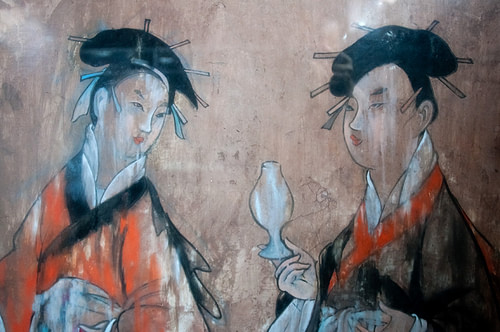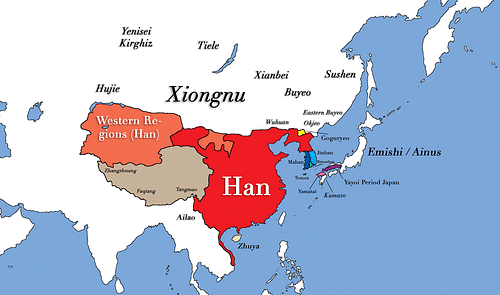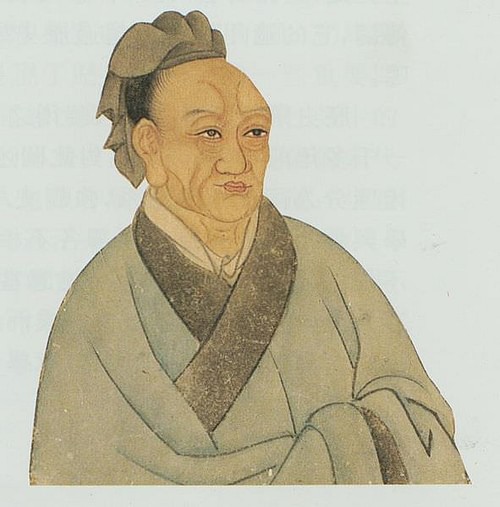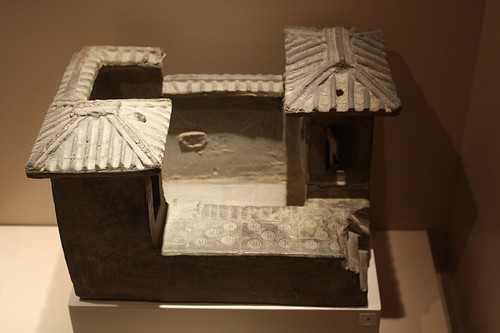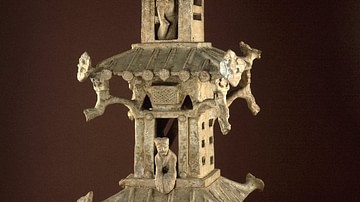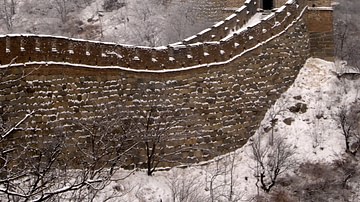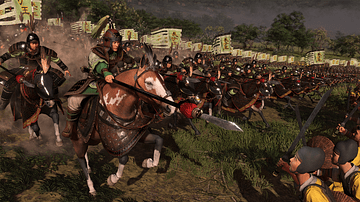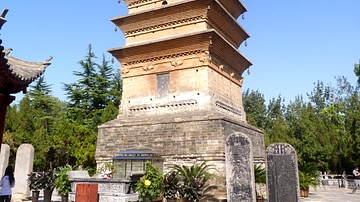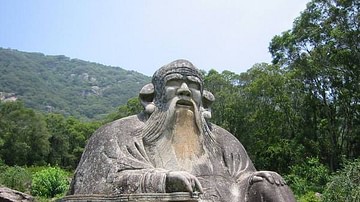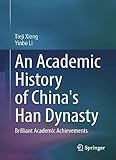The achievements of the Han dynasty (206 BCE - 220 CE), often regarded by scholars and the ancient Chinese themselves as the golden era of Chinese culture, would have lasting effects on all who followed, particularly in the areas of government, law, philosophy, history, and art. The thirst for new knowledge, ambitious experimentation, and unstinting intellectual enquiry are hallmarks of Han culture, and they helped, amongst other achievements, to develop the Silk Road trade network, invent new materials such as paper and glazed pottery, formulate history writing, and greatly improve agricultural tools, techniques, and yields.
The Silk Road
The Han Dynasty saw the first official trade with western cultures from around 130 BCE. Many types of goods from foodstuffs to manufactured luxuries were traded, and none were more typical of ancient China than silk. As a result of this commodity, the trade routes became known as the Silk Road or Sichou Zhi Lu. The 'road' was actually an entire network of overland camel caravan routes connecting China to the Middle East and hence is now often referred to as the Silk Routes by historians. Goods were imported and exported via middlemen as no single trader ever travelled the length of the routes. Eventually, the network would spread not only to neighbouring states such as the Korean kingdoms and Japan but also to the great empires of India, Persia, Egypt, Greece, and Rome. Besides physical goods, one of the major consequences of the Silk Road was the exchange of ideas between cultures carried not only by traders but also diplomats, scholars, and monks who travelled the routes across Asia. Languages (especially the written word), religions (notably Buddhism), foodstuffs, technology, and artistic ideas were spread so that cultures across Asia and Europe helped each other to develop.
Philosophy & Education
Confucianism was officially adopted as the state ideology of the Han dynasty but, in practice, principles of Legalism were followed too, which created a philosophical blend aimed at ensuring the welfare of all based on strong legal principles. Taoism was another influential philosophy in politics and a hallmark of the thinking of the period is one of open enquiry into any ideology which could adequately explain humanity's position in the cosmos and forge a link between government, religion, and cosmology. Theories involving numbers were particularly popular with intellectuals who searched for an all-embracing ideology to explain all facets of the human condition.
One tangible consequence of the promotion of Confucianism and other philosophies by the state was the building of schools and colleges to promote literacy so that the classic texts of Chinese thought might be studied. An Imperial Academy was established in 124 BCE for scholars to study in depth the Confucian and Taoist Classics. By the end of the Han period, the Academy was training an impressive 30,000 students each year. In general, the state held the view that education was a mark of a civilised society, although the expense of sending young people to school severely limited access to education in practice. Society remained highly stratified but, at least for those who had the means to an education, there was now the possibility of access to the state bureaucracy.
In addition to the promotion of philosophy, the destruction of many books on all manner of topics by the Qin emperor Shi Huangti (259-210 BCE) necessitated a massive rewriting project to preserve from memory the accumulated knowledge within those lost works. Inevitably perhaps, while reformulating the past, Han writers were selective according to their own ideas and those of their patrons but, so too, they very often put on record contemporary thought so that the Han dynasty is one of the best-documented periods of Chinese history.
Literature
The earliest surviving literature from ancient China dates to the Han period, although the possibility that earlier writings were deliberately destroyed or have simply been lost over time is not to be discounted. The most famous Han work is undoubtedly the Shiji (Historical Records or Records of the Grand Historian) by Sima Qian (135 - 86 BCE) who is often cited as China's first historian. Qian was actually the court's Grand Astrologer, but as this also meant he had to compile records of past omens and create guides for future imperial decisions, he was, in effect, a historian. The Shiji draws on both oral and written records, including those in the imperial archives, and was begun by Qian's father Sima Tan. The Shiji goes much further than recording astrological phenomena and documents the imperial dynasties in sequence, beginning with early legendary emperors and ending in Qian's own time. Thus, the 130 chapters cover two and a half millennia of history. With a new systematic approach and including descriptions of technological and cultural developments as well as biographies of non-royal famous figures and foreign peoples, the work would hugely influence the official Chinese histories that followed in subsequent dynasties.
Another important Han work and another first is the Canon of Medicine credited to the Yellow Emperor, which is a record of medicine in Han China. The writer Ban Gu (32-92 CE), besides writing his famous history Hanshu (History of the Western Han Dynasty), created a new genre, rhapsody or fu, most famously seen in his Rhapsody on the Two Capitals. Involving dynamic dialogues between two characters, his works are valuable records of local customs and events. By the 1st century CE, the surge in Han literature meant that the imperial library boasted some 600 titles which included works of philosophy, military treatises, calendars, and works of science.
Art
The stability provided by the Han government and consequent accumulation of wealth by its more fortunate citizens resulted in a flourishing of the arts. Wealthy individuals became both patrons and consumers of fine art works. This demand led to innovations and experimentation in art, notably the first glazed pottery and figure painting. The latter was the first Chinese attempts at realistic portraiture of ordinary people. Capturing natural landscapes became another preoccupation of Han artists. Art was previously concerned with religion and ceremonies but now came to focus on people and everyday life activities such as hunting and farming. Tomb paintings, especially, sought to pick out the individual facial characteristics of people and depict narrative scenes.
Paper
One invention which greatly helped the spread of literature and literacy was the invention of refined paper in 105 CE. The discovery, using pressed plant fibres which were then dried in sheets, was credited to one Cai Lun, the director of the Imperial Workshops at Luoyang. Heavy bamboo or wooden strips and expensive silk had long been used as a surface for writing but, after centuries of endeavour, a lighter and cheaper alternative had finally been found in the form of paper scrolls. The combination of brush, ink, and paper would establish painting and calligraphy as the most important areas of art in China for the next two millennia. One other Han innovation was to use paper to produce topographical and military maps. Drawn to a reasonably accurate scale they included colour-coding, symbols for local features, and specific areas of enlarged scale.
Science & Technology
The Han period witnessed a number of important technical inventions and improvements which helped make agriculture much more efficient than in previous times. Better metalworking skills and the wider use of iron meant tools were more effective. The plough, in particular, was greatly improved, and now had two blades instead of one. It was more easily directed, too, with the addition of two handles. The arrival of the wheelbarrow helped farmers shift loads more efficiently. Fans were used to separate kernels from the chaff, and hand mills ground up the flour. Irrigation was greatly improved by mechanised pumps - worked either by a pedal or using a pole with a counterweighted bucket - and wells were made more efficient reservoirs by lining them with bricks. Meanwhile, crop management became more sophisticated with greater care taken over the timing of planting and the sowing of alternate crops in successive rows to maximise yields.
Another area which benefitted from Han investment was the construction of a more extensive road and waterways network, as well as better built harbours. Weaving greatly improved under the Han, especially of silk which, using new foot-powered looms, could have as many as 220 warp threads per centimetre of cloth. Innovations were also made in science such as the use of sundials and primitive seismographs. In medicine, one popular development was the use of acupuncture.
In warfare, the crossbow became much more widely used and now came in more sizes from heavy mounted artillery to light handheld versions. The Han made a far greater use of cavalry than their predecessors, too, making the battlefield a more dynamic and deadly arena. Han swords, halberds, and armour were noted for their craftsmanship and benefitted from the use of iron and low-grade steel.
Social Changes
Although not necessarily 'achievements', the Han government did pass laws which resulted in several significant changes in the ordinary lives of its citizens. Universal conscription had been a feature of an unsettled China for centuries but, in 31 CE, the Han abolished it. Finally recognising that forcing farmers to fight was not the best way to achieve a disciplined and skilled fighting force, they instead (more or less) created a professional army. The sheer size of the Han empire necessitated a huge number of soldiers to defend the borders, but these were now recruited from available mercenaries, conquered tribes, and released prisoners instead of full-time farmers. In addition, the Han government invested some 10% of its revenue on extravagant gifts to rival states. Many states sent tribute in return, and the establishment of strong diplomatic relations ensured that less investment was needed in military defence.
One of the notable changes in the family's dealings with the state was the government's decision to nominate and deal with only one representative of each family unit. Typically, this role went to the most senior male but it could be temporarily held by a woman if her sons were not yet of age. Family ties were strengthened by making everyone responsible for the conduct of each other member in the unit. If one family member was convicted of a serious crime, for example, then the other family members could be enslaved as a wider punishment. Another change was inheritance. Whereas previously the senior male inherited everything, the Han changed the rules to equally distribute inheritance among all male siblings. Daughters still got nothing, though, and their only hope for some financial independence was the dowry their family might provide for them.
An unfortunate consequence of the changes in inheritance was that, over time, farms became smaller and smaller as they were parcelled out to brothers, and it became more difficult to support a family on a single plot. This, in turn, led to small farmers selling out and preferring to work for larger landed estate owners, eventually concentrating land ownership in fewer and fewer hands. Ultimately, the combination of the loss of tax revenue this caused, the general disaffection of the peasantry, and the increase in wealth and power of the aristocracy would lead to the overthrow of the Han dynasty and the splitting of China into three warring kingdoms.
